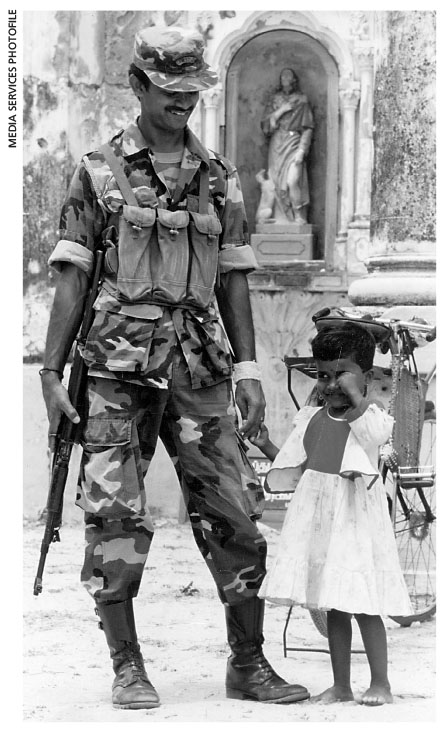1983
A Violent ‘Eelam War I’ Takes Off
First phase of conflict follows July riots
The events of 23 July that gave rise to the start of a protracted conflict between the Sri Lankan state and Tamil separatist movements had seemed inevitable even for a while before the dastardly pogrom that came to be known as ‘Black July.’
There had been rising tensions between government forces and paramilitaries in the island’s northern peninsula, as well as simmering hostility between the two ethnic communities for at least a decade.
And the flashpoint that triggered violent and open conflict between the sides proved to be no less deadly a harbinger of the mayhem that was to ensue than the killing of 13 soldiers in the north by a Liberation Tigers of Tamil Eelam (LTTE) ambush than the brutal and bloody reprisals against the largest ethnic minority, which followed islandwide.
Full-scale civil war erupted between the antagonists in the aftermath of this holocaust. In addition to conventional warfare waged by both sides, this period also saw the first suicide bombing by the LTTE (its ‘Colonel’ Miller drove a truck laden with explosives into an army camp at Nelliady in the north on 5 July 1987).
There were also the Dollar and Kent Farm massacres on 20 November 1984 – the ‘Tigers’ killed security forces, prison guards and prisoners in a Sinhalese settlement where allegedly, all three of these were deployed in succession to egregiously harass Tamils around the areas.
Other atrocities during this period included the LTTE’s slaughter of 146 civilians aboard a bus in Anuradhapura, followed by a killing spree at Sri Lankan Buddhism’s holiest shrine (the Sri Maha Bodhi) where they gunned down monks and nuns as they prayed. This was ostensibly in retaliation for the Sri Lanka Army’s 1985 murder of 70 civilians in Valvettithurai, which was the hometown of Tiger supremo Velupillai Prabhakaran.
It was also a time in which India played a major role in Sri Lanka’s civil conflict – first, by calling a halt to the state’s military operations at a time when its Vadamarachchi operations had cornered the rebels and south India’s citizens in Tamil Nadu ostensibly grew restive; then by despatching an Indian flotilla to relieve an economic embargo on the people of Jaffna; and finally, air-dropping supplies to the besieged citadel when its moves were blockaded by the Sri Lanka Navy.
After President J. R. Jayewardene saw the writing on the wall as regards subcontinental intervention in our sovereign affairs, he signed the Indo-Sri Lanka Peace Accord with our neighbouring nation’s Prime Minister Rajiv Gandhi, which saw the Indian Peace-Keeping Force (IPKF) disembark on Sri Lankan soil and a formal end to Phase I of the Eelam War later in 1987.
India played a major role in Sri Lanka’s civil conflict – first, by calling a halt to the state’s military operations at a time when its Vadamarachchi operations had cornered the rebels




